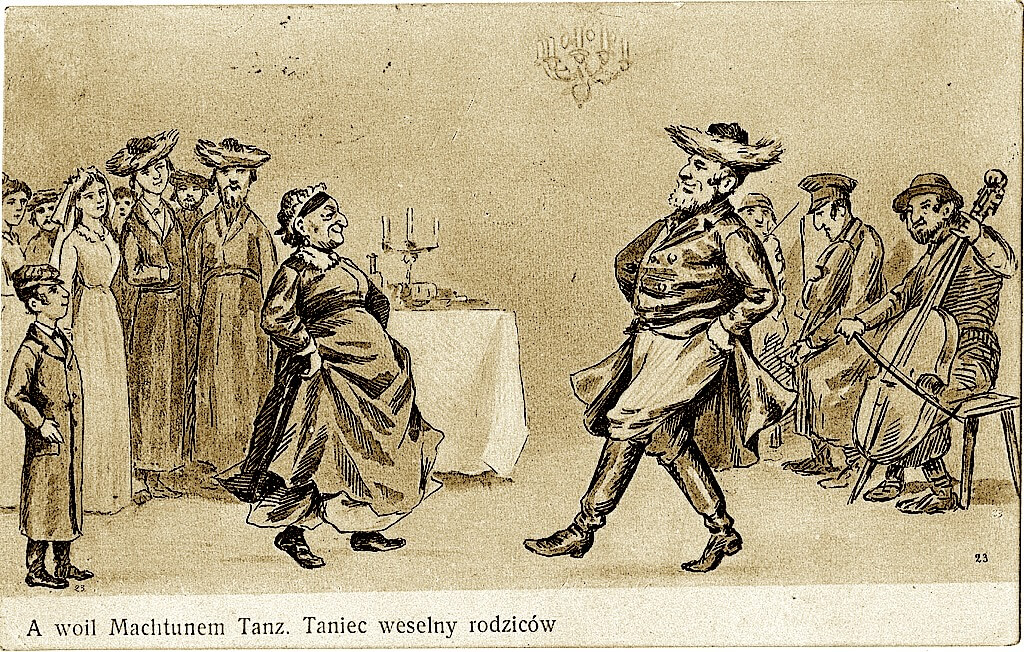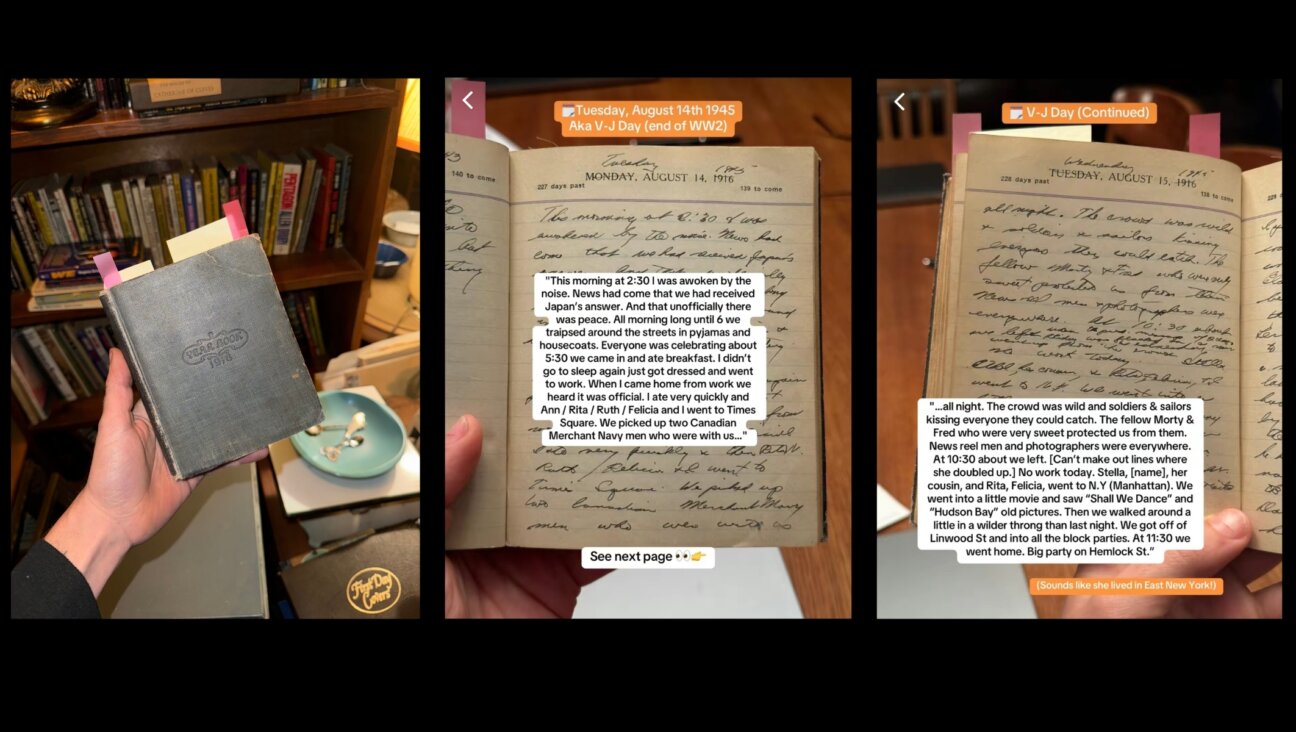One of Bob Dylan’s most Jewish songs is VP candidate Tim Walz’s favorite
‘Forever Young’ may be read as a parent’s blessing to a child, but there’s also a deep Jewish story behind it

Tim Walz and Bob Dylan Photo by Getty Images
Democratic vice-presidential candidate Tim Walz is a big rock music fan. He’s been spotted attending Bruce Springsteen concerts, and as governor he declared Mar. 5 to be “Bruce Springsteen Day” in Minnesota. He renamed a highway near Prince’s Paisley Park estate after the late pop-funk singer, a native of Minneapolis. Like many of the late Warren Zevon’s devotees, he complained on social media about how the eccentric rock singer-songwriter has been passed over numerous times for inclusion in the Rock & Roll Hall of Fame, and he has even paraphrased some of Zevon’s lyrics on the campaign trail (“We’ll sleep when we’re dead”). He counts Minnesota artists, including Lizzo, the Replacements,and Husker Du, among his all-time favorites.
But what has the Bob Dylan world abuzz is that in 2021, in honor of Dylan’s 80th birthday, the governor told an interviewer, “As a dad, ‘Forever Young’ has always been my favorite Dylan song. A timeless message from a dad to his son.”
Set aside for a moment that in the song itself there is no indication that the narrator is a man singing to a son — it could easily be a mother and/or a daughter. The more significant import of Walz’s choice is that it is one of Bob Dylan’s most Jewish songs.
“Forever Young” first appeared on Dylan’s 1974 “comeback album,” Planet Waves. The album marked the first publication of songs under Dylan’s new publishing company, Ram’s Horn Music, a reference to the shofar, an instrument fashioned from a ram’s horn, used most auspiciously on the days leading up to and including the Days of Awe, reminding and calling upon Jews to take stock of their behavior and to do whatever they can to return to the ways of the Lord — a metaphor, really, for the work of the Prophets, aptly applied here to describe Dylan songs.
Dylan’s liner notes for Planet Waves suggest he saw the overall album in a Jewish context. He writes that he “found Jacob’s ladder up against an adobe wall & bought a serpant [sic] from a passing Angel,” an obvious reference to the biblical story of Jacob and how the patriarch had a vision of angels ascending and descending a ladder reaching into the heavens. The reference to Jacob’s ladder also ties in directly with the song “Forever Young,” widely acknowledged to have been written for Jakob, his youngest, and in which Dylan sings, “May you build a ladder to the stars, and climb on every rung.”
On its surface, “Forever Young” is a simple ode to a child, bestowing a wish that the child remains youthful and blessed. Dig a little deeper and the song bears a remarkable similarity to the blessing of the Kohanim, or the priestly blessing, recited in every synagogue service, but more importantly, on every Friday night, in slightly different form, delivered expressly by a parent to his children, recited while placing hands on their heads.
Dylan opens the song singing, “May God bless and keep you always,” just as a parent begins the blessing of the child by saying, “May God bless you and protect you.” The narrator goes on to wish that the child will “always know the truth / And see the light surrounding you,” paraphrasing the next line of the priestly blessing: “May God illuminate His countenance for you and be gracious to you.”
Aside from the song’s inspiration in the Hebrew blessing of the children, there is a sophisticated code built into “Forever Young” — one that Dylan had labored over, on and off, for several years — that mirrors the Kabbalistic concept of the sefirot, or the channels of spirituality though which God interacts with mankind. These channels of divine energy are illustrated in many ways, often likened to the rungs of a ladder. The characteristics Dylan wishes upon the child line up approximately with these ten manifestations of godliness on earth, including hesed, or kindness (“may you always do for others”), da’at, or knowledge (“may you always know the truth”), gevurah, or strength (“stand upright and be strong”), and yesod, or foundation (“may you have a strong foundation”).
So what are we to make of the fact that Tim Walz identifies so strongly with “Forever Young”? Walz is not the only one to find favor with this song; “Forever Young” has been recorded and performed by dozens of other artists, including the Pretenders, Bruce Springsteen, Meat Loaf, Rod Stewart, Diana Ross, Kitty Wells, Joan Baez, Johnny Cash, Patti LaBelle, Nana Mouskouri, and Jerry Garcia. And is Walz — or any of those who sing the song — aware of its deep, Jewish subtext? Is Bob Dylan himself even aware?
Walz probably not. Dylan — given those liner notes putting the album into a Jewish context and how the lyrics correspond to elements of the priestly blessing — probably.
What matters most is that Walz is attracted to a love song from a parent to a child. You don’t find too many of those in rock music. But the Jewish values that inform the song – that a child be strong, courageous, steady, joyful, and well-protected – align with the Democratic party line, which favors building a world that provides all children with equal opportunities to pursue their long-term goals and dreams without sacrificing the boundless innocence and energy of youth. That in “Forever Young” this happens to be expressed in a song with strong foundation in Judaism is perhaps what gives the song the universal resonance that makes it an all-purpose anthem appealing to a broad spectrum of singers and listeners alike. Including, apparently, Tim Walz, whose choice of “Forever Young” serves to underline and emphasize the would-be vice president’s much-touted “dad vibes.”
A message from our Publisher & CEO Rachel Fishman Feddersen

I hope you appreciated this article. Before you go, I’d like to ask you to please support the Forward’s award-winning, nonprofit journalism during this critical time.
We’ve set a goal to raise $260,000 by December 31. That’s an ambitious goal, but one that will give us the resources we need to invest in the high quality news, opinion, analysis and cultural coverage that isn’t available anywhere else.
If you feel inspired to make an impact, now is the time to give something back. Join us as a member at your most generous level.
— Rachel Fishman Feddersen, Publisher and CEO






















